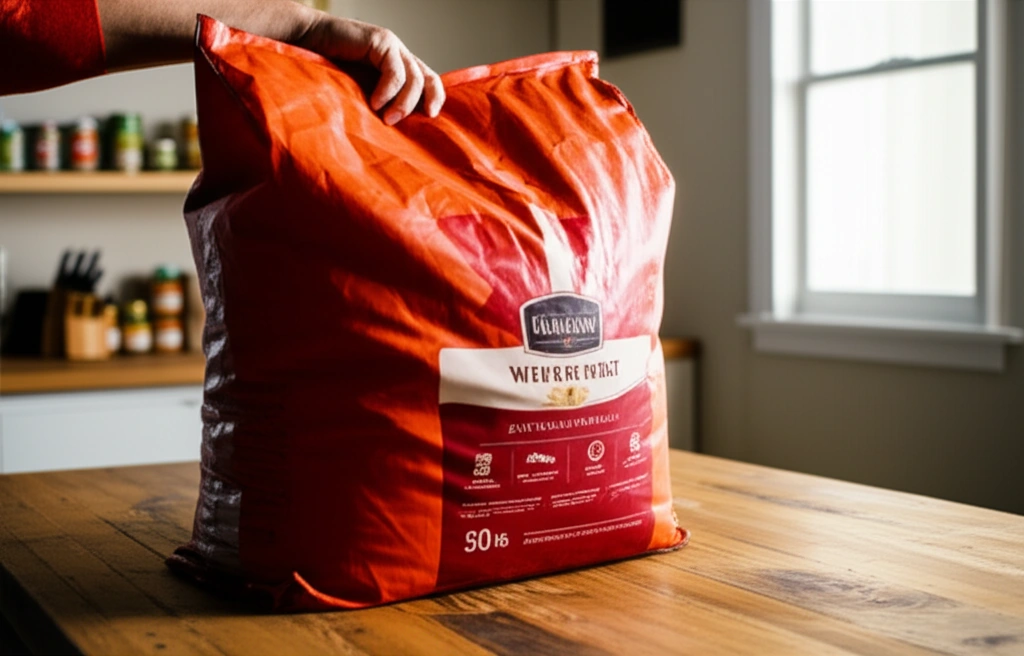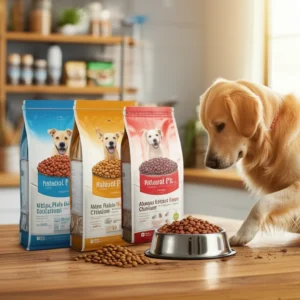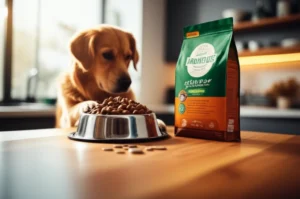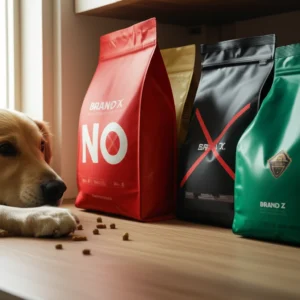Alright, I get it. Finding the cheapest 50 lb bag of dog food can sometimes feel like a wild goose chase, right? You want something affordable but without throwing your dog’s health out the window. Maybe you’re juggling a tight budget or just looking for the best bang for your buck. Whatever your reason, you deserve straightforward info—none of the confusing fluff. So, let’s jump right into what really matters:
When we talk cheapest, it’s not just about slapping a tag with the lowest price. It’s about value—how that food nourishes your pup, how long it lasts, and how it fits your dog’s unique needs. Saving a few bucks today but spending more on vet visits or extra food tomorrow just isn’t a win.
Why Price Isn’t Everything
Here’s a little secret: the lowest price per bag isn’t always the cheapest overall. How’s that? Well, think about it. You buy a 50 lb bag priced super low, but your dog has to eat more because it’s hard to digest or low in nutrients. So you burn through that bag faster, meaning you actually spend more per month.
Instead, try thinking about cost per day or even cost per 1,000 calories. That helps you see the bigger picture and avoid deals that look great but don’t really deliver.
| Factor | Why It Matters |
|---|---|
| Price per Bag | Initial cost, but doesn’t reflect quality |
| Cost per Day | Shows real monthly expense factoring feeding angle |
| Protein Quality | Essential for muscle, coat health, and energy |
| AAFCO Statement | Ensures balanced nutrition meeting minimal standards |
Retailers like Walmart, Tractor Supply, PetSmart, and Amazon typically offer a range of 50 lb bags where prices can fluctuate between $30 and $75, depending on the brand and formula.
Choosing Dog Food Smartly
Okay, let’s be honest—dog food labels can be a nightmare. But if you keep an eye on a few simple things, you can make a smart choice even on a budget. Start with the Guaranteed Analysis. This tells you the protein, fat, fiber, and moisture. Protein’s your key player here, ideally from named sources like “chicken” or “beef”, not vague “meat meal” or “by-products.”
Also, look for the AAFCO statement on the bag. It means the formula meets minimum nutritional standards. That’s your safety net.
If you have a larger dog, this gets even more important. Large breeds have special nutrient and calorie ratios to support joints and avoid rapid growth issues. If that sounds like your buddy, best dry dog food for large breeds can point you in the right direction with options specifically designed for them.
Where To Find The Best Deals On 50 Lb Bags
You might already be scouring Walmart aisles or Amazon listings—and that’s a great place to start. Both places often carry popular affordable brands like Pedigree and Purina. But be sure to compare prices and factor in shipping. Sometimes the cheapest bag in-store isn’t a steal once shipping fees are added.
If you want to play a little retail detective, look for subscription options, loyalty programs, or seasonal promos. For instance, best cheap dog food at walmart shares some lesser-known savings tips that might surprise you.
Local feed stores or co-ops can also be hidden gems, especially if they stock store brands or bulk bags. Just double-check freshness and ask if they have any return or exchange policies—because no one wants stale kibble!
Ranking The Cheapest Bags: A Quick Guide
To help you decide, here’s a simple checklist you can apply when hunting for your dog’s next bulk food bag:
- Price per pound and per day (calculate feeding amounts)
- Named protein sources (watch out for vague labels)
- AAFCO nutritional adequacy statement
- Any recall history or safety alerts for the brand
- Does the formula match your dog’s stage (puppy, adult, senior) and size?
For example, some store brands tend to rank well on price but may falter on ingredient transparency. Meanwhile, brands like Royal Canin offer breed or size-specific formulas—though usually at a higher price point. You can check out royal canin dog food if you’re curious about those options.
Which Brands Should You Avoid?
Look, nobody wants to waste money or risk their furry friend’s health. There are dog food brands floating around that you might want to stay clear of—or at least approach with caution. Watch out for:
- Labels with lots of “by-products” or mysterious ingredients
- Formulas without clear protein sources
- Brands with recent, frequent recalls or controversy
- Marketing gimmicks that sound too good to be true
It’s always a good idea to check lists of dog food brands to avoid, which are carefully compiled by pet nutritionists and veterinarians. They’ll help you steer clear without obsessing over every little detail yourself.
Large Breed Dogs Need Special Attention
If you have a big guy or gal at home, bulk food choices get trickier. Large breeds usually do better with formulas tailored to their needs—think joint support, controlled calories, and balanced minerals. This keeps their growing bones and muscles strong without excess stress on their joints.
You might think grabbing any cheap 50 lb bag will do the trick, but some “all breed” foods don’t quite cut it. I’ve seen owners lose months to digestive upset or unexpected weight gain before switching to best large breed dog food designed specifically for these gentle giants.
Saving Money Without Sacrificing Quality
Here’s a little hack from my own experience: buy smart, store smart. Once you’ve found a decent 50 lb bag at a good price, keep it fresh. Use airtight bins or containers to keep moisture, bugs, and oxygen out—that stale kibble smell? Not great for your pup or your wallet.
And don’t hesitate to mix in toppers or add-ons if you want to boost your dog’s nutrition without breaking the bank. Throw in some affordable proteins or veggies on top—they’ll love the variety, and you’ll feel better knowing they’re getting a nutrient boost.
When To Talk To Your Vet
Finally, never underestimate the power of a quick chat with your vet or a canine nutrition expert. Changes in your dog’s weight, coat, or digestion might mean your budget brand isn’t cutting it. They can help tailor recommendations or suggest supplements that make good food even better.
Out of curiosity, have you noticed any particular changes after switching your dog’s food? What’s your experience with bulk dog food shopping? I’d love to hear your story or tips!
Wrapping It Up
So, what’s the bottom line on the cheapest 50 lb bag of dog food? It’s a balancing act between budget, nutrition, and what works for your unique dog. You want to avoid only focusing on price and instead consider the overall value: quality ingredients, feeding amounts, and your dog’s wellbeing.
Remember to use your checklist, compare real costs, and choose a brand with a solid reputation—even if it’s not the absolute cheapest tag you see. With a little research and care, you can absolutely find a bag that’s affordable and nourishing.
And if you want to learn more about picky dog food problems, options for large breeds, or warning signs for dodgy brands, be sure to check out these handy resources on best dry dog food for large breeds, best cheap dog food at walmart, dog food brands to avoid, and royal canin dog food. They might just save you time (and dollars) as you hunt down that perfect bag.
Happy feeding—and here’s to many wagging tails ahead!













